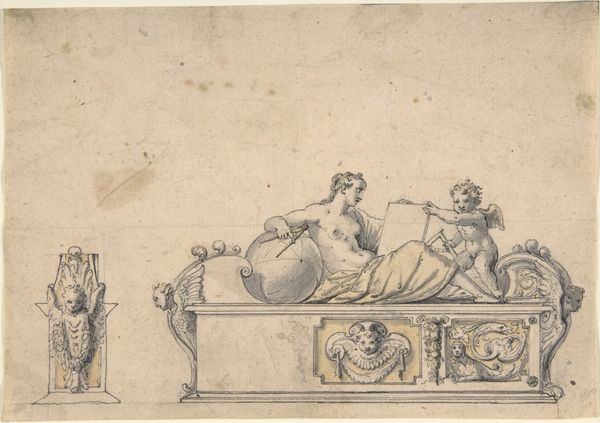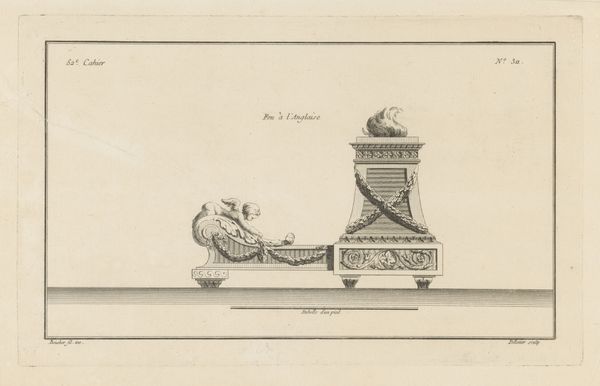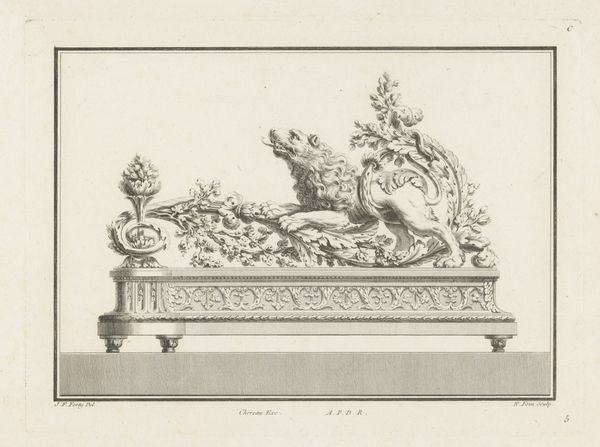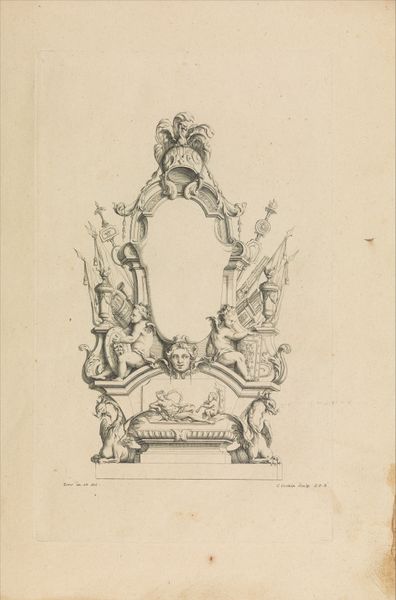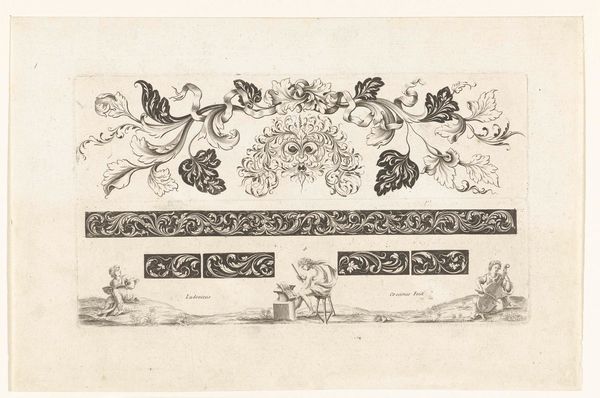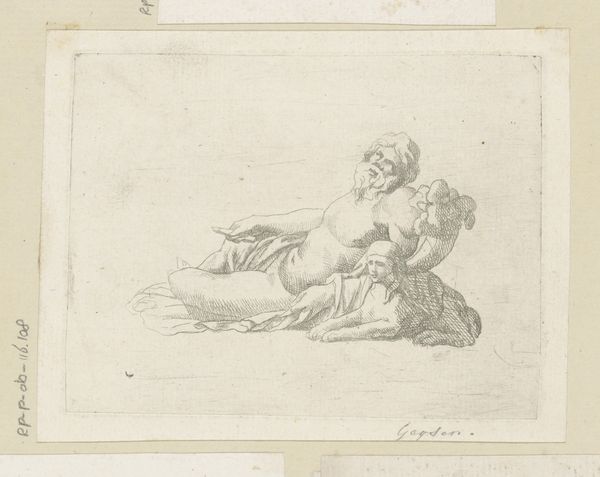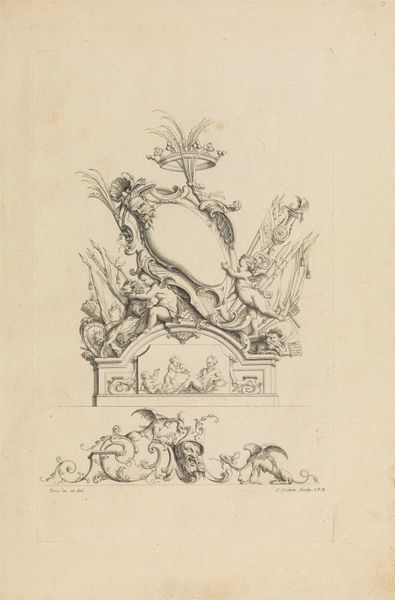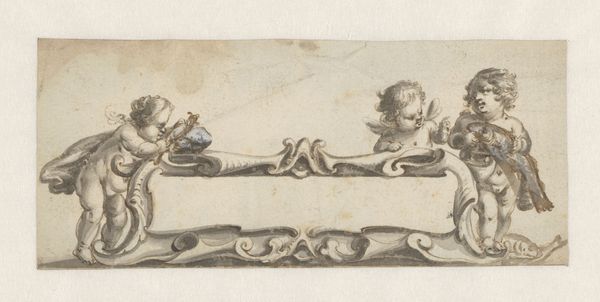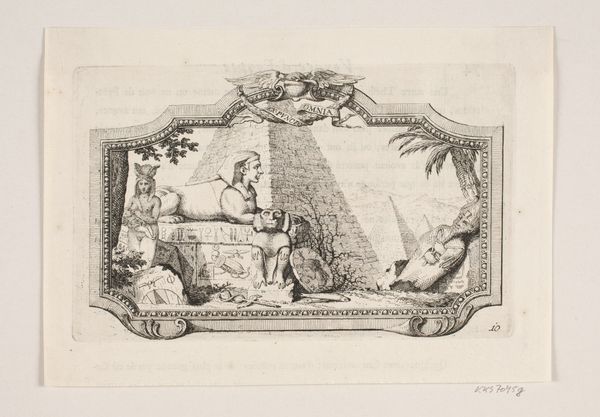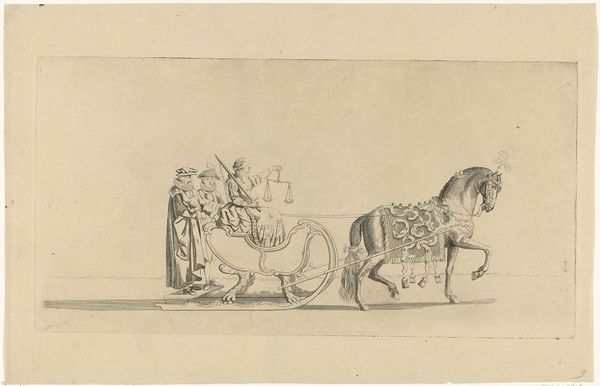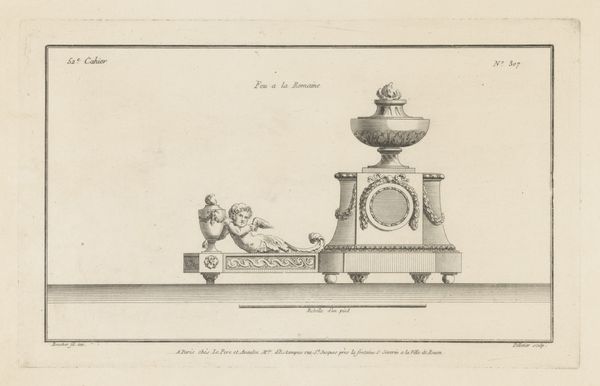
#
comic strip sketch
#
aged paper
#
light pencil work
#
pencil sketch
#
old engraving style
#
personal sketchbook
#
pen-ink sketch
#
sketchbook drawing
#
pencil work
#
storyboard and sketchbook work
Dimensions: height 198 mm, width 262 mm
Copyright: Rijks Museum: Open Domain
This is Augustin Foin's "Vuurbok met sfinx," made in the 18th century using etching. The sphinx, a creature of myth, is depicted here in service of European aristocratic aesthetics. Often these types of drawings were design proposals for wealthy patrons. What does it mean to take a figure that has origins in both ancient Greece and Egypt and adorn it with symbols of European power? What happens when an ancient symbol is refashioned as a mere ornament, devoid of its original cultural significance? Consider too, the cherubic figure atop the sphinx, holding a torch aloft. Are they symbols of enlightenment, or do they represent the ways in which knowledge and power can be intertwined, particularly during the colonial era? What can it tell us about the relationship between power, representation, and cultural appropriation?
Comments
No comments
Be the first to comment and join the conversation on the ultimate creative platform.
